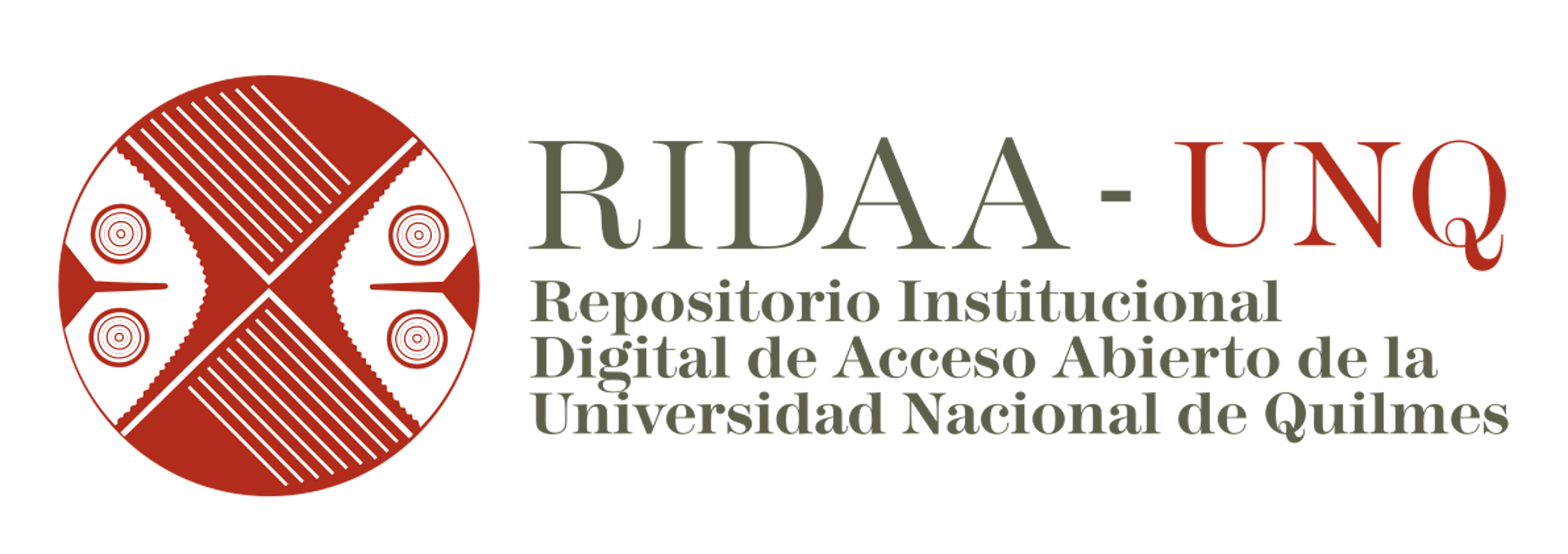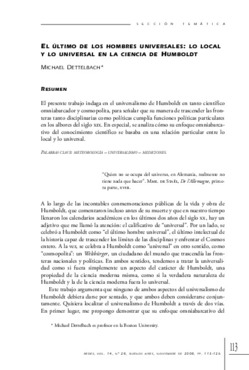El último de los hombres universales : lo local y lo universal en la ciencia de Humboldt
The last universal man : the local and the universal in Humboldt’s science
Fecha
2008-11Autor
Dettelbach, MichaelResumen
El presente trabajo indaga en el universalismo de Humboldt en tanto científico omniabarcador y cosmopolita, para señalar que su manera de trascender las fronteras tanto disciplinarias como políticas cumplía funciones políticas particulares en los albores del siglo XIX. En especial, se analiza cómo su enfoque omniabarcativo del conocimiento científico se basaba en una relación particular entre lo local y lo universal. This paper wants to localize Humboldt’s universalism in two ways: a) by showing that his all-embracing approach to scientific knowledge was predicated on a particular relationship between the
local and the universal, as fragment and whole, as ruin and living culture. Humboldt’s universalism was the product not of a capacious mind, but of a carefully constructed way of reading data and understanding measurement of a whole range of different disciplines. The very lawfulness of Nature Humboldt set out to discover and reveal in the first half of the 19th century depended on the recognition of the essentially local character of measurement and observation; and b), by showing Humboldt’s universalism to have particular, local meanings, and to have served particular, local purposes. Both forms of universalism performed particular political functions between France and Prussia at the turn of the 19th century, and were part of a single culture.

